Season Overview—Dry vs Wet
Dry Season (roughly December to April)
The Everglades come into razor-sharp focus in the dry season. Water levels fall, wildlife concentrates around sloughs and ponds, and trails stay firm underfoot. Skies are bright, humidity drops, and afternoon thunderstorms are rare. This is widely considered the best time to visit the Florida Everglades if you want reliable wildlife viewing with comfortable temps and fewer mosquitoes.
Wet Season (roughly May to November)
The landscape turns lush and cinematic. Water rises into sawgrass prairies, orchids bloom, and summer clouds billow into painterly sunsets. Expect heat, humidity, daily storms, and more insects. While it’s not everyone’s choice, the wet season delivers dramatic skies, fewer crowds on weekdays, and a deeper sense of the Everglades’ wild rhythm. Note that hurricane season peaks from August through October; monitor forecasts closely and build flexibility into plans.
Shoulder Months That Punch Above Their Weight
Late November to mid-December and March to early May can blend the benefits: decently low water, increasing wildlife activity, and better lodging value. If you love birds, late winter into early spring is prime; if you chase storms and saturated greens for photography, early summer can be magical.
Wildlife Calendar You Can Actually Use
Alligators and Wading Birds (Dec–Mar)
As water recedes, alligators bask on muddy banks and wading birds cluster to hunt. Boardwalks like Shark Valley’s and Anhinga Trail near Royal Palm offer close-up encounters. Binoculars elevate the experience: watch for great egrets, roseate spoonbills, herons, and fish crows orchestrating the marsh.
Manatees and Sea Breezes (Nov–Feb)
Cool snaps push manatees toward warmer canals and coastal waters in South Florida. While the Everglades proper isn’t a guaranteed manatee nursery, nearby coastal areas and the Ten Thousand Islands region increase your odds after cold fronts.
Alligator Mating Season (Apr–Jun)
Listen for low rumbles in late spring. Early mornings reveal territorial displays and impressive bellowing. Give these reptiles plenty of space—zoom lenses are your friend.
Butterflies, Orchids, and Summer Drama (Jun–Sep)
The wet season trades megafauna density for intimate details: ruddy daggerwings, zebra longwings, ghostly air plants, and thunderheads that stack like mountains. Pack breathable sun layers and expect to embrace the elements.
Weather, Crowds, and Costs
Comfort Index by Month
January–March: Mild temps, low bugs, peak visitation. April: Warming fast, still great for wildlife. May–September: Hot, humid, stormy; fewer crowds but plan midday breaks. October–November: Transition to comfortable, photogenic light, and improving trail conditions.
Budget Reality Check
Dry-season lodging and tours book early. If you’re flexible, midweek stays in late fall or early spring offer better rates without sacrificing experience quality. Campsites also go quickly in winter—reserve far ahead.
Storm Awareness
From late summer into fall, respect tropical systems. Travel insurance with weather coverage, cancellable reservations, and backup activities (museums in Miami or Naples) add resilience to your plans.
Itineraries by Entrance
Shark Valley (Miami side)
Best for: Iconic vistas, easy-access wildlife, family-friendly biking. The 15-mile loop provides open prairie views and frequent gator sightings. Dry season mornings deliver crisp light; in summer, aim for sunrise or late afternoon to dodge heat and storms.
Flamingo (southern tip)
Best for: Coastal birds, backcountry paddling, starry skies. Winter brings pelicans and ospreys; spring lights up the marina with activity. Consider an evening paddle when winds calm—safety gear and tide awareness are essential.
Gulf Coast & Ten Thousand Islands (west side)
Best for: Mangrove mazes, dolphin sightings nearby, and calmer crowds. Hire a local guide for navigation and regional natural history. In the wet season, short windows after storms can produce spectacular cloudscapes.
Photographers’ Golden Hours
Light and Timing
In winter, sunrise ignites prairie grasses in soft gold—perfect for long lenses at Shark Valley. Summer sunsets lean cinematic with towering cumulonimbus catching pink and copper tones. Carry a polarizing filter to slice glare off water and a microfiber cloth for sudden rainbursts.
Lenses and Ethics
Telephotos (300mm+) compress distance without stressing wildlife. Keep to boardwalks, obey distance guidelines, and avoid playback of bird calls. Great shots are great because they’re ethical.
A Real Trip Story: Two Days, Two Everglades
Day 1: Dry-Season Clarity
On a late-February morning, Mia and her dad rolled into Shark Valley with steaming coffee and ambitious hopes. By mile three, they’d counted six gators sunning like living sculptures. A volunteer ranger pointed out a purple gallinule threading lily pads—its iridescence bright as a candy wrapper. The air felt light; the soundscape was wingbeats and distant splashes.
Day 2: Wet-Season Wildness (months later)
They returned in August, curious about the contrast. Storm clouds stacked over the prairie; thunder grumbled. Between showers, the landscape was electric—emerald greens, dragonflies flossing the air, and a sky that kept changing outfits. It wasn’t as wildlife-dense, but every step felt cinematic. They left with a deeper respect for how seasons write different stories on the same stage.
Smart Planning and Booking with Refined Travel
Match Your Month to Your Mood
If comfort and wildlife density top your list, the dry season is your bullseye. If you crave drama, solitude, and saturated color, try early summer with a flexible schedule. For tailored lodging, private guiding, and backup plans, consult 【Refined Travel 】 for curated options that fit your season, budget, and interests.
What Refined Travel Can Arrange
From family-friendly bike rentals at Shark Valley to expert-led birding walks near Royal Palm, 【Refined Travel 】 helps secure timed entries, reputable outfitters, and weather-smart day plans—so you focus on the wonder, not the logistics.
Quick FAQ and Pro Tips
1. Is the best time to visit the Florida Everglades always winter?
Winter (dry season) is easiest for wildlife and comfort, but shoulder months offer strong value and fewer crowds. Summer suits storm-chasers, photographers, and experienced hikers who plan around heat.
2. How bad are the mosquitoes?
Manageable in winter; heavy in late spring and summer. Wear long, breathable layers, use EPA-registered repellent, and consider head nets for sunset walks in the wet season.
3. Are airboat tours better in one season?
They run year-round. In dry months, wildlife is concentrated; in wet months, the marsh feels vast and alive. Choose smaller, eco-conscious operators that respect wildlife distances.
4. Safety basics I shouldn’t forget?
Carry more water than you think you need, watch weather radar in summer, never feed wildlife, and keep a respectful distance from alligators. If lightning is close, seek shelter—storms move fast across open prairie.
Final Nudge to Go
Let the Season Choose the Story You Want
The best time to visit the Florida Everglades depends on the story you’re after—crisp winter clarity, moody summer drama, or a balanced shoulder-month blend. With the right timing and a plan shaped by experts at 【Refined Travel 】, you’ll step into a living landscape where every sunrise feels like a first draft of the world.

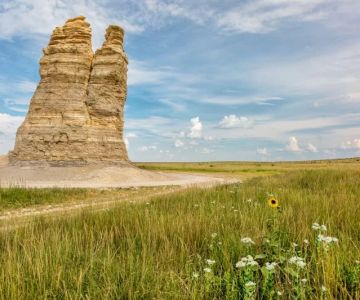
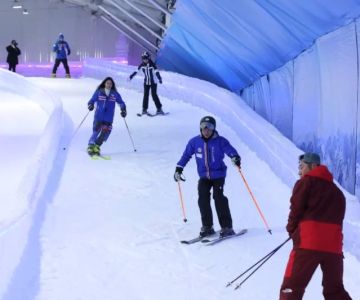
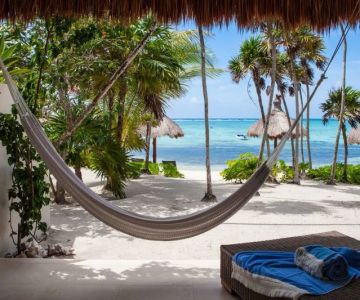


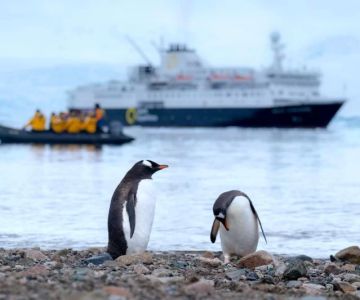
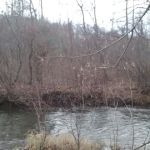 Brush Creek Campground3.0 (10 reviews)
Brush Creek Campground3.0 (10 reviews)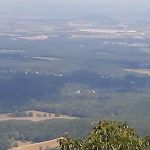 Knox Mobile City3.0 (59 reviews)
Knox Mobile City3.0 (59 reviews)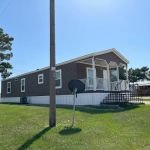 Northtown Village0.0 (0 reviews)
Northtown Village0.0 (0 reviews)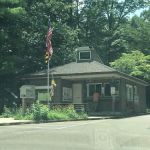 Camping Registration Office - Cunningham Falls State Park4.0 (52 reviews)
Camping Registration Office - Cunningham Falls State Park4.0 (52 reviews) Cap's Mobile Home Park5.0 (2 reviews)
Cap's Mobile Home Park5.0 (2 reviews) Trailer Park3.0 (27 reviews)
Trailer Park3.0 (27 reviews)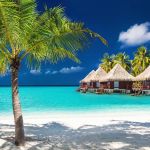 Exclusive Travel Packages for First-Class Travelers: A Guide to Luxury Vacations
Exclusive Travel Packages for First-Class Travelers: A Guide to Luxury Vacations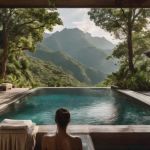 Refined Travel Experiences in Southeast Asia: Explore Luxury & Unique Destinations
Refined Travel Experiences in Southeast Asia: Explore Luxury & Unique Destinations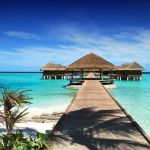 How to Make the Most of Luxury Vacation Deals: Expert Tips for Savvy Travelers
How to Make the Most of Luxury Vacation Deals: Expert Tips for Savvy Travelers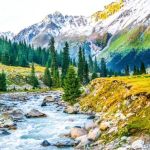 How to Enjoy a Refined Travel Experience in the Mountains
How to Enjoy a Refined Travel Experience in the Mountains Refined Travel Itineraries for Art and Culture Lovers: Explore the World of Art and History
Refined Travel Itineraries for Art and Culture Lovers: Explore the World of Art and History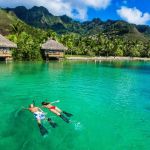 Most Luxurious Destinations for Honeymooners: Top Spots for Romance and Luxury
Most Luxurious Destinations for Honeymooners: Top Spots for Romance and Luxury